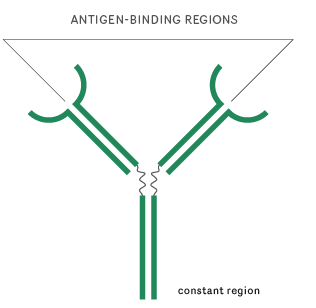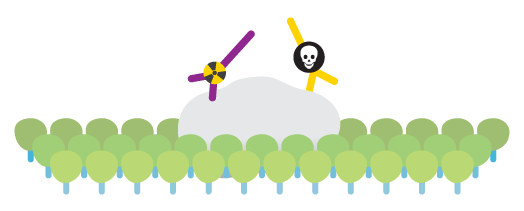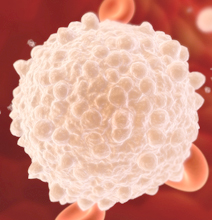Monoclonal antibodies (mAbs)
Although we produce antibodies during a normal immune response, monoclonal antibodies are created by genetic engineering and do not exist in nature.

Antibodies are Y-shaped proteins that are part of the immune response. They bind and help remove the foreigner invaders or modified cells, such as microorganisms or cancer cells.
Each antibody recognizes and attaches itself to a specific target, called antigen. Made in a laboratory, mAbs are just sets of identical copies/clones of a single antibody. This means that they all bind and respond to the same antigen.
For cancer treatment, scientists use mAbs that bind specifically to proteins found on the cancer cells, flagging them as targets for therapy while healthy tissues are spared.
Some mAbs used in immunotherapy are considered targeted therapies. In this case, the antibodies bind and interfere with molecules or biological processes essential for tumor survival and malignancy.
Since they recognize antigens (specific targets) on the surface of cancer cells, mAbs can also be used to transport anti-cancer medication- chemotherapeutic and radiotherapeutic drugs, or toxins - directly to the cancer cells.
They can also contribute to the immune response, by identifying the cancer for the body's cancer response. It is then easier for body's cells – called T lymphocytes, NK cells and macrophages– to find and destroy the tumor.
This last mechanism , crucially, can result in an immunological memory against cancer.

Conjugated antibodies (in purple and yellow) bind to an antigen (in grey) on the surface of a tumor cell. Conjugated antibodies are antibodies attached to other molecules, here colourful ones, so they can be easily identified.
New types of mAbs against many types of cancer are now being researched.
Trastuzumab (Herceptin®) is one of the most commonly used to treat breast cancer. This mAb binds and interferes with HER2, a molecule that promotes the growth of breast cancer cells, stopping the cells from dividing and ultimately killing them.





